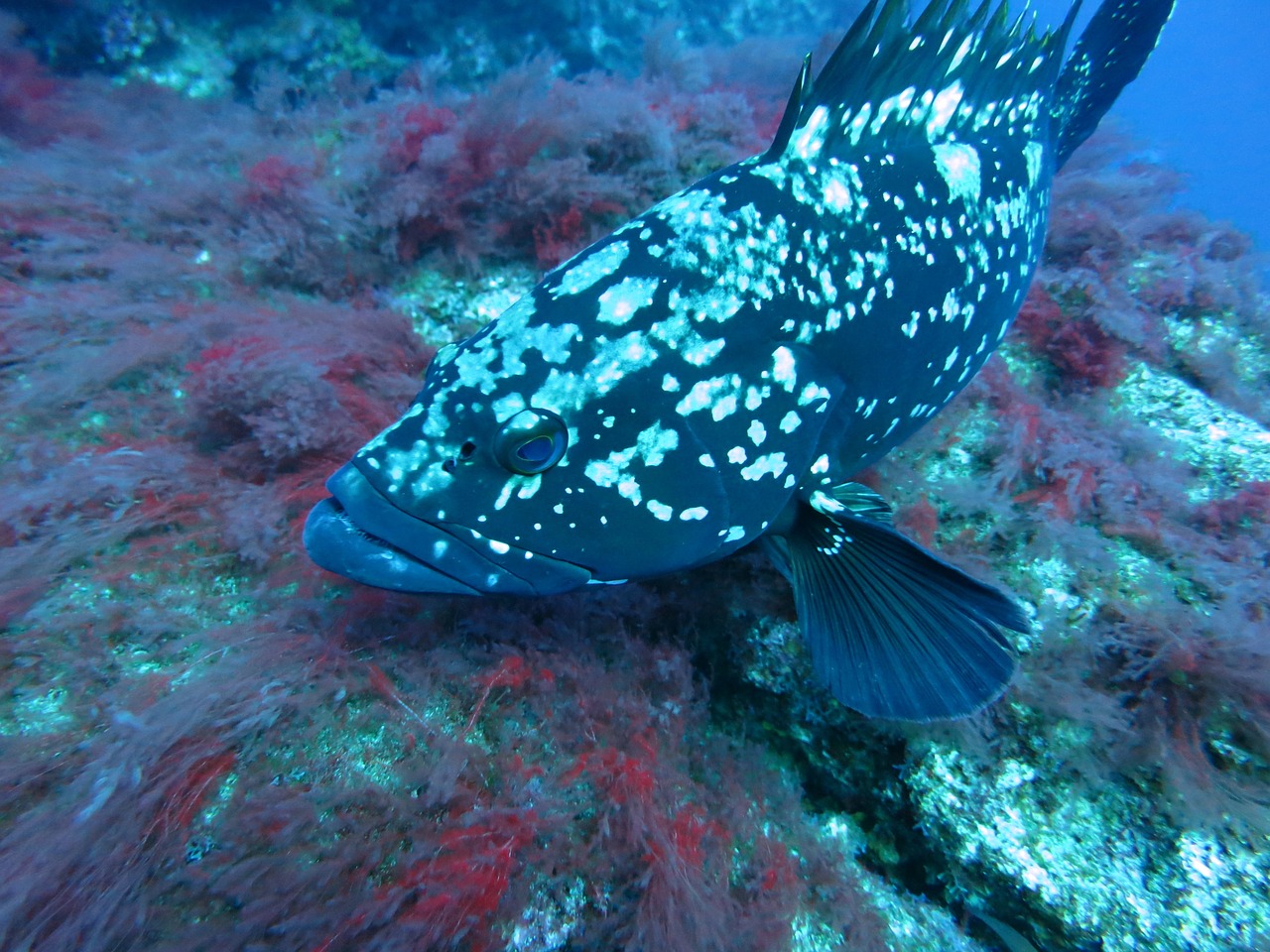
The world is filled with so many different types of fish in the seas across the globe, it is easy to become overwhelmed, especially when trying to name all the varieties that people encounter from day to day. The different types can also vary based on the geographical location. So, for those of you who want to know the most common types in any specific area, you will need to your research first. It is also important to note that some fish types are more commonly known than others and they can be very interesting to study for more basic and detailed facts. Here are some facts about the grouper that can help everyone to identify them when they see them in their own natural habitat or other areas in which they may be located.
What does a Grouper Look like?
First, there are several things that usually standout right away. Starting with the fact that these fish range in colors, size, and sub species. There are also 2 different traits that makes it easy for anyone to distinguish them from other fish types, and they are the large eyes and the large mouths.
Significant distinguishing Characteristics in its Size
The size of fish can also greatly vary based on the sub species involved. For instance, if the person is researching the specific species of the grouper, they may find that one of the biggest types that anyone will ever run into is called the goliath grouper. Based on information provided by the professionals in this industry, the largest goliath documented in history is 680 pounds. The goliath, however, is not on the books as the most common grouper so everyone need to look a little further to find which types are the most prevalently known. For instance, with a weight of about 40 pounds, the yellowfin anglers are the most common.
Geographic Locations
Grouper are primarily found in places like Florida, Texas, and other places in the southeastern part of the United States. It is also important for everyone to know that the grouper can also be found the waters of Brazil.
Where to find Groupers in their habit
While some fish can be described as hunters that can easily be seen before they pounce on their prey, this is not true for the grouper. Groupers spend their time as out of sight ambush hunters that cannot be seen until the ambush is complete. Therefore, when people want to study or catch them they may start their search by looking in caves, reefs and even shipwrecks. Primarily, these fish can be found in different types of structures at the bottom of the ocean.
What do Grouper Eat?
Since one of the main distinguishing features of the grouper is their huge mouth, most people want to know what do they eat. Because the opportunities appear to be endless, the bigger better the crustacean would normally be the guess. Even though it may seem like these fish may concentrate on some of the biggest prey in the ocean, they do have some specialties that some people may or may not expect. For instance, one of their main menus is a diet that is filled with lobsters, octopuses, and other types of fish. To capture their prey as a hunter, they have a feeding technique that allows them to open their huge mouth and then engulf their prey whole.
Reproduction and Spawning Habits
The reproduction and spawning habits of the grouper is unique and different from many other fish in the sea. However, there are some specific things that a fisherman would look for if they are trying to study their regular habits. One of which identifies these fish as protogynous hermaphrodites. Even though all the sub species do not fit this classification, there are some that do and they can vary in size and weight. For instance, as a protogynous hermaphrodites, these fish usually start their lives as females and then change its sex over time into male. Typically, this timeframe normally spans between 5 to 10 years in length. The changes are based on at least one determining factor and that is the grouper’s weight. In fact, the bigger groupers are much more likely to change than the smaller groupers. The spawning period for the grouper is normally around the months of May and can last through the month of August.
Predators
Though the grouper is known for its capabilities to become dangerous hunters for octopus and other fish, they can be at risk too from predators around the sea. Specifically, when it comes to the larger groupers that can easily be a delicious dish for sharks, moray eels, and barracudas.
WHAT IS GROUPER FISHING?
Unlike other fishing trips, a grouper fishing trip can be challenging and memorable, because these fish are huge treats for anyone who decides to reel them in, fisherman will need to be strong to catch them. So, there are different fishing methods that can be used for those who want to be successful. One of the most popular is called trolling for groupers. For instance, instead of a fisherman sitting down on the banks of the river quietly waiting for a bite, they will ride a slow boat that keeps moving, while the line of the fishing rail trails behind the fishing boat.
Conclusion
Groupers are made up of several subspecies so they may not all be easy to classify. However, there are a few distinguishing characteristics that make them very easy to identify. In specific, these fish have huge mouths and eyes that makes it easy for them to find their prey in the water and catch them whole before they swallow them live.
For great fishing rod guides for all your fishing needs read here.










Pingback: Grouper Recipes | Reel Fishing Guru
Pingback: Best 5 Grouper Reels Review and Buying Guide | Reel Fishing Guru
Pingback: Are Grouper the Same as Cod? | Reel Fishing Guru
Pingback: How to Fish for Grouper under a Bridge? | Reel Fishing Guru
Pingback: Are Pinfish Good Bait for Grouper? | Reel Fishing Guru
Pingback: Are Groupers Poisonous? | Reel Fishing Guru
Pingback: How do Groupers Eat Lionfish? | Reel Fishing Guru
Pingback: Worms in Grouper: What you Need to Know | Reel Fishing Guru
Pingback: What is the Difference between Grouper and Mahi Mahi? | Reel Fishing Guru
Pingback: Is Grouper the Same as Garuopa? | Reel Fishing Guru
Pingback: Does Grouper Taste Like Lobster? | Reel Fishing Guru
Pingback: How Long Does Grouper Last in the Fridge? | Reel Fishing Guru
Pingback: What are Grouper Dents? | Reel Fishing Guru